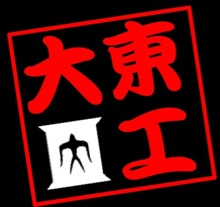Team:Tokyo Tech/Project
From 2008.igem.org
| Line 439: | Line 439: | ||
<IMG src="https://static.igem.org/mediawiki/2008/6/63/Tech_constraction.jpg" align="middle"> | <IMG src="https://static.igem.org/mediawiki/2008/6/63/Tech_constraction.jpg" align="middle"> | ||
| - | + | ||
| - | + | ||
<p class=MsoNormal><b style='mso-bidi-font-weight:normal'><span lang=EN-US>Confirmatory | <p class=MsoNormal><b style='mso-bidi-font-weight:normal'><span lang=EN-US>Confirmatory | ||
experiment<o:p></o:p></span></b></p> | experiment<o:p></o:p></span></b></p> | ||
<IMG src="https://static.igem.org/mediawiki/2008/6/6b/Tech_plac_g1.jpg" align="middle"> | <IMG src="https://static.igem.org/mediawiki/2008/6/6b/Tech_plac_g1.jpg" align="middle"> | ||
| - | <p class=MsoNormal | + | <small><p class=MsoNormal style='text-indent:5.25pt;mso-char-indent-count:.5'><span |
| - | + | lang=EN-US>Fig1:Pressure-response of Plac-GFP under several pressures measured by flow cytometer</span></p></small> | |
| + | |||
<!----------------------------------------------------------------------------------------------------------> | <!----------------------------------------------------------------------------------------------------------> | ||
| - | <IMG src="https://static.igem.org/mediawiki/2008/e/e5/Tech_pic_30.jpg | + | <IMG src="https://static.igem.org/mediawiki/2008/e/e5/Tech_pic_30.jpg" > <IMG src="https://static.igem.org/mediawiki/2008/a/a2/Tech_pic_rp.jpg" height="241"> <IMG src="https://static.igem.org/mediawiki/2008/f/f6/Tech_pic_nega.jpg" height="241"> |
<small><p class=MsoNormal style='text-indent:5.25pt;mso-char-indent-count:.5'><span | <small><p class=MsoNormal style='text-indent:5.25pt;mso-char-indent-count:.5'><span | ||
| - | lang=EN-US> | + | lang=EN-US>Fig2-1:Plac-GFP under 30MPa Fig2-2:Plac-GFP under 0.1MPa Fig2-3:⊿-GFP under 30MPa</span></p></small> |
| - | <p class=MsoNormal><b style='mso-bidi-font-weight:normal'><span lang=EN-US | + | |
| - | + | <!----------------------------------------------------------------------------------------------------------> | |
| + | <p class=MsoNormal><b style='mso-bidi-font-weight:normal'><u><span lang=EN-US | ||
| + | style='font-size:14.0pt'>Stratagy 2. Basic device<o:p></o:p></span></u></b></p> | ||
| + | |||
<!----------------------------------------------------------------------------------------------------------> | <!----------------------------------------------------------------------------------------------------------> | ||
<p class=MsoNormal><b style='mso-bidi-font-weight:normal'><u><span lang=EN-US | <p class=MsoNormal><b style='mso-bidi-font-weight:normal'><u><span lang=EN-US | ||
Revision as of 21:51, 20 October 2008
Project
Code name Rising Sun
E.coli UKIYO-E
This project aims to make UKIYO-E by E.coli. UKIYO-E is a genre of Japanese woodblock prints.
| You can write a background of your team here. Give us a background of your team, the members, etc. Or tell us more about something of your choosing. | |
| Tell us more about your project. Give us background. Use this is the abstract of your project. Be descriptive but concise (1-2 paragraphs) | |
| Team Example 2 |
| Home | The Team | The Project | Parts Submitted to the Registry | Modeling | Notebook |
|---|
(Or you can choose different headings. But you must have a team page, a project page, and a notebook page.)
Our project
We want to make a Coli Touch!!
→We try to construct a bacterial ‘touch panel’ which is colored by the pressure.
We name it Coli touch.
Why pressure?
Example of input style to genetic circuit
- Heat: thermal gradient
- Small molecule: concentration gradient
- Light: strength depend on location of container
 Difficulty in uniform introduction
Difficulty in uniform introduction
Press! Confirmatory experiment
Prospect of technological application!!
Pressure
inducible promoter - Plac
The affinity of LacI for the lac operator is known to decrease due to a tetramer to dimer transition of LacI
![[サンプルの絵]](https://static.igem.org/mediawiki/2008/b/bd/Test.jpg)
Strategy
![[サンプルの絵]](https://static.igem.org/mediawiki/2008/c/cf/Test2.jpg)
Equipment. Instrument for pressure experiment

Fig 4: Fig4-1 is a pressure vessel. Fig4-4 is a pressurizing system. Fig4-2 show a inside of the vessel. The inside is filled with water and the withstand pressure container is put into the inside. Fig4-3 show a water bath placed some vessel.
Strategy
1.Construction

Confirmatory
experiment

Fig1:Pressure-response of Plac-GFP under several pressures measured by flow cytometer



Fig2-1:Plac-GFP under 30MPa Fig2-2:Plac-GFP under 0.1MPa Fig2-3:⊿-GFP under 30MPa
Stratagy 2. Basic device
Stratagy 3. Development of low pressure inducible
promoter
We performed random mutagenesis to lac promoter and tried to screen promoters with FACS.
Strategy for Isolation of promoters
Future
work
• try Step 2 and 3
• characterize isolated promoters
4.Genetic
toggle switch to implement rewritable function
・ genetic toggle switch
- Writable function
Plac is induced under 30 MPa pressure
(PL is not induced by 30 MPa pressure)
Express GFP, CI, and CI represses PL
→ bright !!
- Erasable function
PL is induced by heat
Express LacI, Plac represses GFP
→ go out little by little…
Future work
- Identify pressure model parameter from experimental data
- Simulate pressure induction by pressure model and estimate
promoter-RBS strength to implement rewritable function
Mathematical model
Contents |
 "
"
